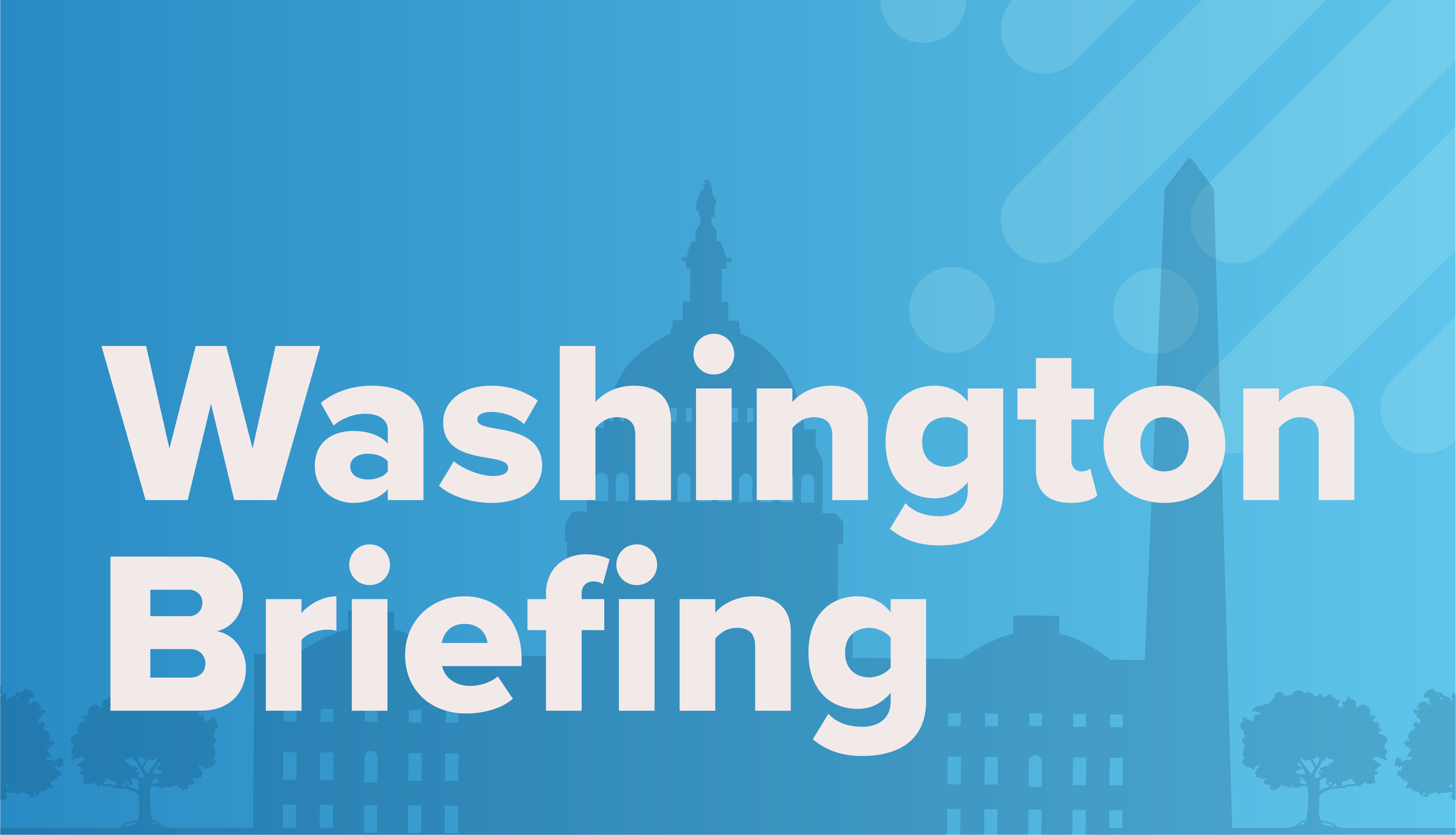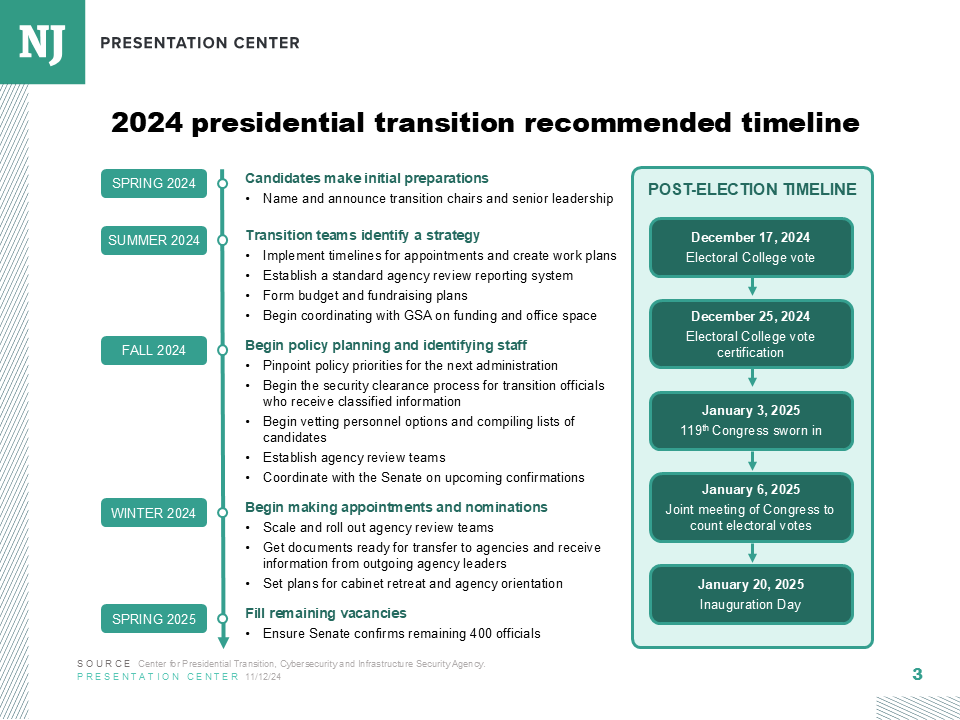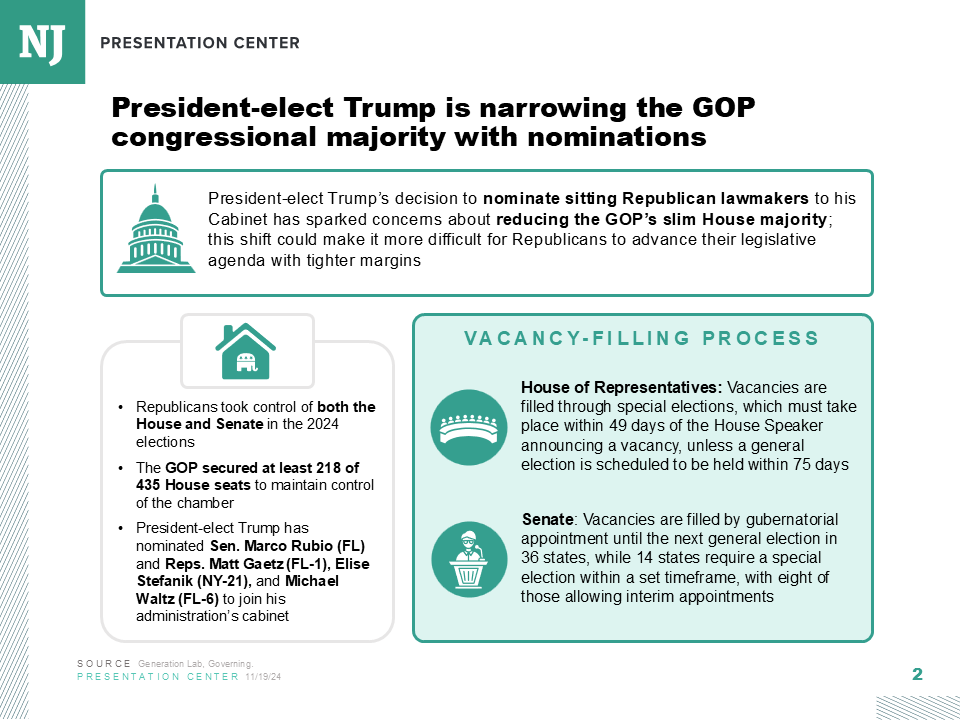Democrats secured decisive wins in Tuesday’s off-year elections, giving the party a boost of confidence and forcing Republicans to reconsider their economic message.
In Virginia, Gov.-elect Abigail Spanberger won by 15 points, the largest margin for a Democratic gubernatorial candidate in the state since 1961. In New Jersey, Gov.-elect Mikie Sherrill won by 13 points. Democrats also won races in Georgia, Mississippi, and Pennsylvania. The margins of these races, more than the results, point to voters’ disdain for the Trump administration and burgeoning support for Democrats.
“These two races were much more than a major rejection of Donald Trump’s chaos,” Democratic Governors Association Chair Meghan Meehan-Draper said on a press call. “We had really strong candidates in Mikie Sherrill and Abigail Spanberger, and they stayed laser-focused on the economy and their positive plans for affordability.”
Here are some of the main takeaways for Democrats and Republicans from Tuesday’s results:
Voter enthusiasm is still there despite Democrats’ low approval ratings
Democrats have appeared dejected since Donald Trump won a second term last year, all while the base has called on Democrats in public office to resist the president and his administration. The large margins for Spanberger and Sherrill could show that Democratic candidates are successfully capturing the base. But Democrats will need to double down to continue that momentum into the midterms.
This year, Democrats have also overperformed in special elections. In the April special elections in Florida, the Democratic contenders for House outperformed former Vice President Kamala Harris by 23 points in the 1st District and by 16 points in the 6th District. On average, Democrats have performed about 14 points better in special elections this year than they did in 2024.
“Winning begets winning,” said Martha McKenna, a consultant and veteran of the Democratic Senatorial Campaign Committee. “And I think this will help us energize participation in the special elections to come and also in the midterms.”

Affordability messaging works
The 2018 midterm cycle saw loud Democratic resistance to Trump, with many warning voters of what policies and stances he could take. In his second term, Trump has been able to enact policies that are now directly impacting voters.
Sherrill, Spanberger, and New York City Mayor-elect Zohran Mamdani all campaigned on affordability. Virginia and New Jersey both saw energy costs rise due to data centers, Northern Virginia faced job losses due to the Trump administration’s reduction of the federal workforce, and New York City housing prices have skyrocketed.
“It’s visceral for people,” said Rohan Patel, executive director of Majority Democrats.
The Trump administration’s cancellation of renewable-energy and infrastructure projects, such as the Gateway tunnel in New Jersey, gave Democrats an opening to campaign on economic harms.
“In 2026, it’s much more about a reckoning, where voters feel the drain,” Democratic strategist Jesse Ferguson said.
The ‘perfect candidate’ doesn’t solve all Democrats’ problems
The Democratic sweep showed a rejection of Trump’s policies but cast little light on what kind of candidate voters want to see.
Democratic strategists have mused that candidates like Sherrill and Spanberger—moderates with military and national security backgrounds—might show the path forward for the party, combating perceptions that Democrats are “weak” and “woke.”
Some point to Mamdani, who calls himself a Democratic Socialist, as the future of the party because he energized voters and engaged younger voters—a bloc Democrats have struggled with recently.
The question of which option represents the future remains unresolved for now.
“Winning can paper over a lot of problems in a party,” Democratic strategist Mike Nellis said.
Nellis pointed to the ongoing discussion over elderly Democrats remaining in office as one issue that the party will still need to assess.
In July, Democrats reached their lowest approval ratings in decades. While Trump’s approval remained low, approval for Democrats did not increase correspondingly.
The question of what an ideal candidate for the Democratic Party looks like may change when the time comes to select one presidential nominee in 2028. In the interim, there’s little need for a one-size-fits-all approach when other issues still need to be addressed.

Trump’s base stayed home in another non-presidential election
The president’s base tends not to turn out when his name isn’t on the ballot. This election was no different.
Exit polling showed Spanberger and Sherrill enjoyed advantages with younger voters. About 8 in 10 women under 30 supported Sherrill and Spanberger. Young men, who broke hard for Trump in 2024, supported the Democratic candidates this time, though not as decisively as young women did.
“We’ve seen this movie before,” GOP strategist Matthew Bartlett said. “Trump has an amazing ability to get votes when he’s on the ballot, and then just has this amazing blowback, time after time.”
Democrats have overperformed in non-presidential elections since 2017, and both New Jersey and Virginia have reliably voted Democratic since 2008—even though the Garden State swung closer toward him in 2024.
Trumpn blamed his party’s losses on the government shutdown and the fact that his name was not on the ballot. He called on Senate Republicans to end the filibuster rule in order to end the shutdown and change perceptions.

Anti-woke messaging is stale
Winsome Earle-Sears, the Republican gubernatorial nominee in Virginia, focused much of the latter half of her campaign on transgender policies. While there were other problems with Earle-Sears’ candidacy, Democrats’ efforts to campaign on the economy prevailed in the end.
Republican Vivek Ramaswamy, who ran for president in 2024 and is now running for governor in Ohio, advised his party to “cut out the identity politics” after Tuesday’s results.
The people who will be swayed by anti-transgender ads are likely already voting Republican, according to GOP strategist Liz Mair. To win over independents, economics need to come first. Republicans will need to recalibrate their economic message in the lead-up to the midterms.
The Trump administration may do more to address rising energy costs, which helped Sherrill and both Democratic candidates for Georgia Public Service commissioner cruise to victory. The administration has made efforts to reform permitting and promote fossil fuels, which may help Republicans answer the attacks on energy costs.
The few GOP bright spots were dimmed
In New York, Republican Nassau County Executive Bruce Blakeman won reelection by a higher margin, 7 points, compared to 5 points in 2021. Nassau County is split between New York’s 3rd and 4th Congressional Districts, currently held by Democratic Reps. Tom Suozzi and Laura Gillen. Both races are on the National Republican Congressional Committee’s target list. Shifting trends could bode well for potential Republican control of those seats.
What was perhaps the biggest win for Republicans didn’t come from their side of the ballot. Mamdani as the future New York City mayor gives Republicans a bogeyman they’ve been struggling to find.
“He’s going to be in attack ads across the country,” Targeted Victory Vice President Ryan Williams said.









